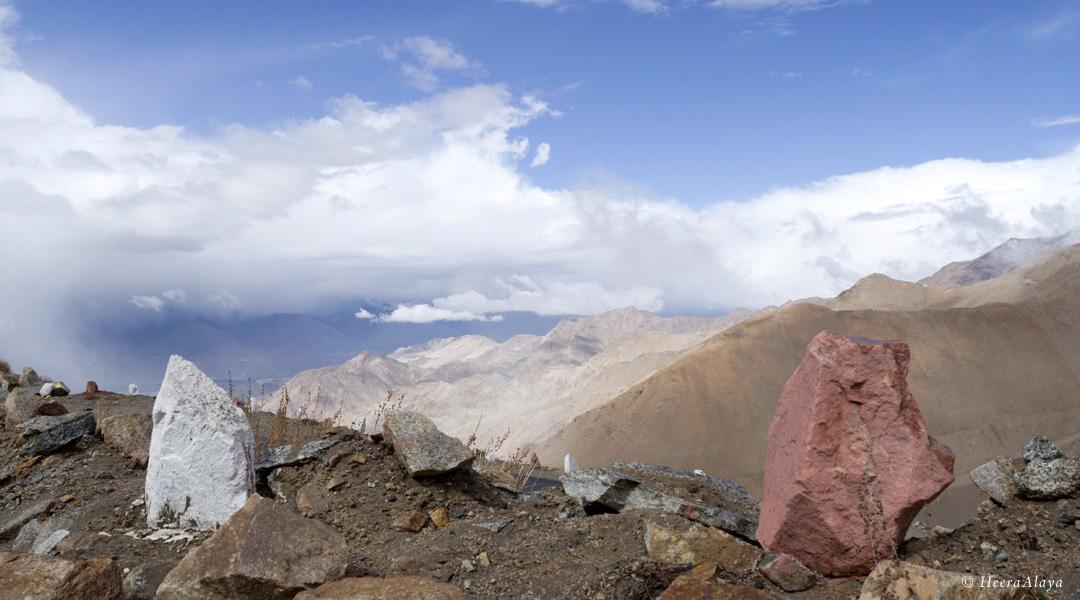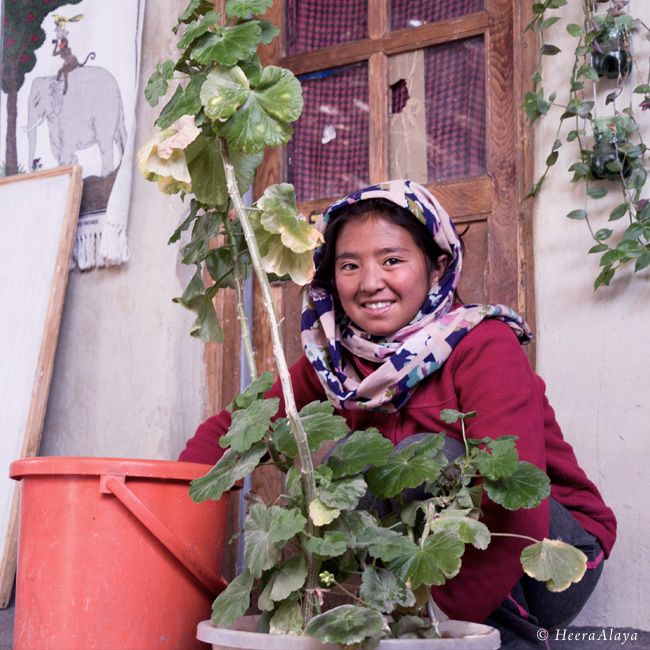
SLOW
THE ROAD LESS TRAVELLED
discovering rich territories
By Heera Alaya
January 1st, 2018
In the region of Ladakh [India], nature’s sparkle transitions smoothly—from the stars dazzling at night to the rocky crags sparkling in emeralds, amethysts and ochres in daylight. The landscape fascinated me as I made my way through the winding roads. Within seconds, the sun-blasted terrain was blanketed by fluffy clouds, parting momentarily to offer a glimpse of distant snow-capped peaks, snapping back to blindingly illuminate.
Against the canvas of Ladakh’s arresting terrain, The Students’ Educational and Cultural Movement of Ladakh [SECMOL]—a school single-mindedly engineered by Sonam Wangchuk’s vision—sits bracketed between mountains and the Indus River. This second-to-none location, teeming with a profusion of trees, is as inviting as the openness of Chokrap, a young student who welcomes me, insisting I settle in with a cup of tea. Chokrap’s ownership and warmth served as an aperitif, setting the tone for a sumptuous experience.

The sparseness of Ladakh’s terrain flows into the well-organised sanctuary created for children to rise above the constraints placed on them by society. Where the spaces speak of functionality, the layers of thoughtfulness demand quiet contemplation. At SECMOL, the focus is on learning; this infrastructure promotes ownership and accountability while facilitating curiosity, introspection and discussion.
On the SECMOL campus, self-motivated children engage closely with their environment, taking pride in their surroundings. For instance, Cozam and Gyatzo carry out a mundane act—of wiping dust off leaves—with joy. It is to be expected that in this atmosphere, attentive to caring, children are encouraged to express their feelings and thoughts, especially during dinnertime. One of the students pointed to and discussed a quote by the late American activist and First Lady Eleanor Roosevelt: “Great minds discuss ideas; average minds discuss events; small minds discuss people,” making it clear that in this environment, high thinking is internalised.
The school speaks of well-ordered richness—from motivating messages to clean stacked utensils and colour-coded grain shafts to spartan classrooms. The children didn’t require coaxing to get to classes—on hearing the bell, their sense of ownership had them scurrying. Surprisingly, they were not screaming in a disorderly manner, which is a norm among Indian children (and adults), particularly the educated, the affluent and the foreign-returned. Each caring detail—on the SECMOL campus and the students—bears the stamp of the enlightened Sonam Wangchuk.
Persistent interruptions constrict city children, whereas SECMOL shields children from distractions, facilitating their all-around evolution. At SECMOL, education moves towards increasing an individual’s completeness, with poetry, music, and photography holding significant places. Also evident was the children’s fondness for animals—the resident cat strode in and made herself the centre of the conversation, which prompted Padma, Spalgyas, and Chokrap to show me the calves and cows.

The natural flow—of colours, textures and aesthetics—remains uninterrupted, from the terrain to the living areas and from the classrooms to the cowsheds.
In this silent landscape, the only sounds that the generous breeze carries are a chorus of birds chirping, children laughing and bells ringing. And where the musical julay’s [hello and thank you in Ladakhi] punctuate the sounds of nature, the elegance of life seamlessly unifies with Sonam Wangchuk and the children. It is a treat to watch Mr Wangchuk—whose visceral connection is as visible as his intellect—interact with the children; their camaraderie comes to fruition thanks to a sense of belonging and inclusivity. Shared sensitivity and kindness at SECMOL is a gift for the soul.





Unlike actors rendering roles of sanctimonious valiant heroes on the Indian silver screen, who in reality destroy with their armoury—propagating mass-machismo and illiteracy, Sonam Wangchuk encapsulates a real-life knight. This self-assured knight speaks clearly: “Please call me Sonam,” he insists, asking after me, listening attentively. In experiencing each element at SECMOL, the lack of superfluousness gave me a glimpse into Wangchuk’s mind and made evident the intensity of the truth Sonam is living. As we spoke of a shared vision for humanity, it was conspicuous that Sonam’s nature is at once light-hearted, in command, trusting, supportive and goal-oriented. This knight, Sonam Wangchuk, bestowed with an invaluable armour of intellect, humanity and intention, redefines the worthiness of life, towering over a counterfeit battalion, rightly residing in India’s crest—Ladakh.
In Ladakh’s starkness, I reflected on my life’s journey, sifting through thoughts: my animal family validating my sensitive-compassionate nature; my invested school teachers facilitating my appreciation for simple living-high thinking individuals like Sonam Wangchuk and my austere foundation that eventually bolstered me through the wreckage. These investments make me indebted to pay it forward for children. Empowered, I move onward, anchored to my unaltered resolve.
Over the days, as the car, with windows rolled down all the way, inched up the mountain roads, I was treated to surreal forms and colours, from a mélange of stupas to large flocks of mountain goats, reminding me that I will never know what lies ahead of the turn; this uncertainty posed by life helps me evolve. In the spirit of the men who take the road less travelled, for those who are inspired, we must continue to venture into territories that promise richness, for humanity.




